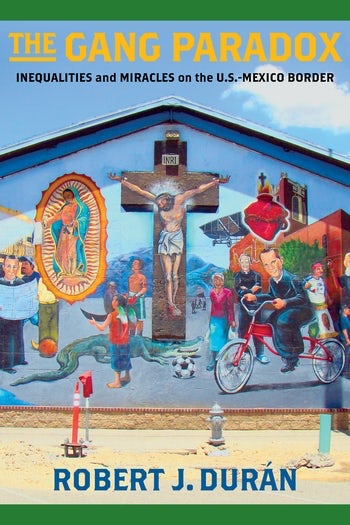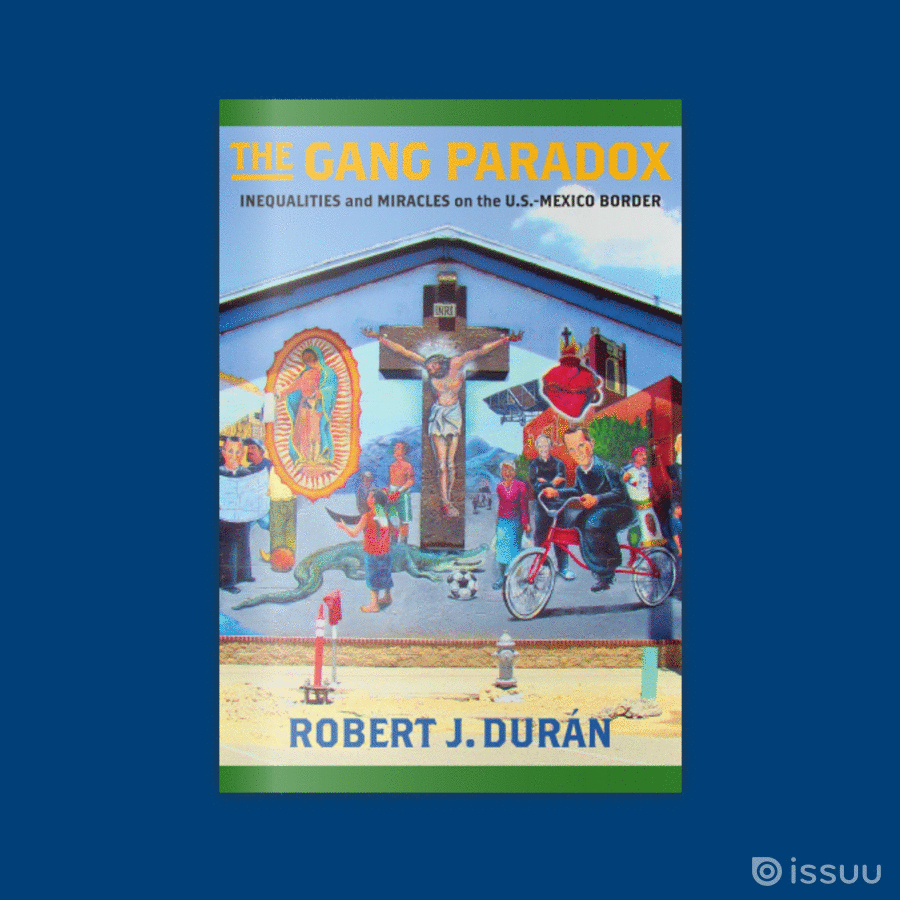Q&A: Robert J. Durán on The Gang Paradox

“The Gang Paradox tells a story about the Mexican American experience on the border, including gangs and institutional reactions to them. In clear, descriptive, and refreshingly reflexive language Durán argues that the reality of gangs is far from its media image, and provides ample data to make his point. This book is educational in the best sense and should be welcomed.”
~ John Hagedorn, University of Illinois at Chicago, author of A World of Gangs: Armed Young Men and Gangsta Culture
This week we’re featuring The Gang Paradox: Inequalities and Miracles on the U.S.-Mexico Border. Today, we are happy to present an exclusive Q&A with the book’s author Robert J. Durán’s to discuss the value his book brings to public conversations surrounding gang life. The Gang Paradox debunks modern perceptions of the goings on within our society, thus providing readers with a paradigm for which to approach studying marginalized groups. This book follows in a similar vein his first book, Gang Life in Two Cities: An Insider’s Journey, wherein former gang member Durán conducted a unique study of gang life, revealing core characteristics, behaviors, activities, and more.
• • • • • •
With over 90 years of gang research, including more than a thousand publications, what makes your book, The Gang Paradox, any different?
Robert J. Durán: There are several themes that make this book unique. First, as a former gang member, I was interested in not only researching gangs but also working to improve the lives of individuals who encountered obstacles for which mainstream policymakers and researchers have expressed little empathy or desire to correct. As a Chicano scholar, my inspiration has been to subvert generations of exclusion. Second, my research on gangs incorporates an examination of the ethnic and racial histories for the communities I study. Gangs do not just form anywhere and most groups never receive the categorization or identity as being a gang. Thus, my research goes beyond the topic of “gangs” to provide a study of racial and ethnic inequality, and in this case along the U.S.-Mexico border, to describe processes in which groups form and the responses they receive from various institutions. Third, I developed a level of collaboration among students, community residents, and practitioners for whom the data gathering led to incorporating additional leads and perspectives.
As a researcher, how did your life change or adapt to the people you were studying?
RJD: I’m an ethnographer and with this methodology you become the research tool for which all data is gathered. It requires patience, an ability to listen, and a heightened sense of curiosity to continue developing networks to learn more. I began this project in 2007, and it incorporates interviews, observations, oral histories, census data, research teams, and juvenile justice and crime data from a variety of official institutions. All these data sources were then combined to put together a thorough overview of the community and the residents living in southern New Mexico and El Paso, Texas. My four children attended public schools from the grades of preschool to high school and this informal access provided me a parental perspective to where I could observe the experiences of my children and their friends. The coolest part of my research in these areas was how I was accepted and given access to institutions and practitioners who were less available in my first book. I think my paternal ancestral ties to New Mexico, surname, and role as a criminal justice professor provided networks along with a local news story that highlighted my journey as a “homie” professor.
From what I have read, you created research teams where college students participated in gathering data on gangs. Can you tell me more about this aspect of your research?
RJD: Research has always been my passion and research as a praxis is even better. In graduate school, I learned the emancipatory power for which conducting research could provide voice, activism, and more knowledgeable policies in the local community. I was teaching classes with a high proportion of students who reflect the surrounding communities (i.e., first generation, students of color, working class, and from various neighborhoods). It was after my experiences in the classroom that I began to understand how the voices of my students were essential for the telling of this story. In the process, students learned applied research, more about gangs, worked together with others, and helped create a technical report which was shared online. After analyzing the data collected for this book, I realized how the findings of my students deserved a chapter of its own. My students demonstrate leadership for which these communities will continue to build and grow and sharing their voices is an essential part of this process.
How can this book contribute to the everyday lives of residents encountering inequality and injustice in their communities?
RJD: A book alone cannot fix the inequalities I observed while living and researching these issues, and the historical outline provided demonstrates the massive challenges that exist. I hope my book can aid in the effort to counter the demonization of border residents, gangs, and crime while also outlining the role of state violence and structural forms of neglect which have operated differently depending on the historical time period. Nevertheless, agency is one of the most powerful forms in creating outliers. When outliers collaborate with others to demand change, then we begin to create the social movements that defy expectations. I’d hope my book can provide an important analysis for which local residents can work together to challenge various forms of colonial repression. Residents who live along the border, particularly Hispanics and Mexicans, have often been treated with second class citizenship or as illegals. A simple analysis of history outlines how the shifting nature of the border should never deny humans their humanity and protection from abuse.
What has had the biggest impact on you?
RJD: My biggest takeaway from this research project was developing an understanding of how history, external pressures, and U.S.-based institutions have created a structure that continues to impact the lives of community residents. It’s a story of settler colonialism, inequality, and neglect wherein these conditions resulted in the creation of groups that became known as gangs. Nevertheless, it is also a story of miracles for which despite the obstacles that exist in southern New Mexico and El Paso, Texas residents continue have lower rates of gang involvement and participation in violence, particularly homicide. Residents contribute to the institutions of athletics, education, family, religion, and mainstream goals that will continue to benefit U.S. society. Thus, despite political ideologies of fear, this section of the border demonstrates an intense desire for acceptance and inclusion into U.S. society, a society which has often worked to maintain second-class treatment.






